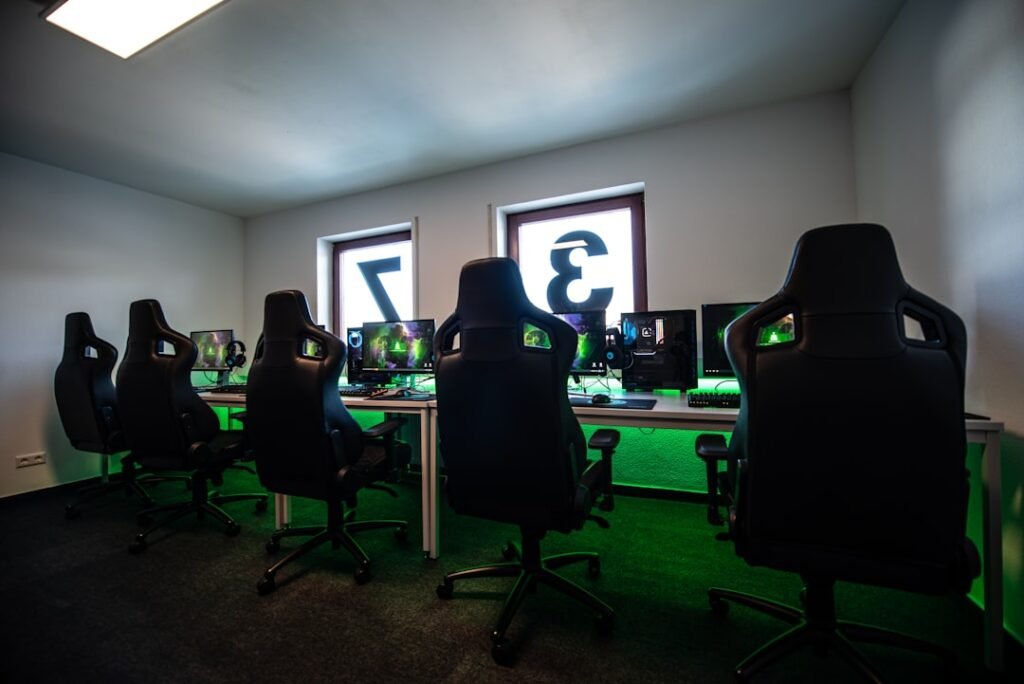The Saas-Bahu era in Indian television refers to a period in the early 2000s characterized by the dominance of family dramas. These shows primarily focused on the relationships and conflicts within extended families, particularly emphasizing the dynamics between mothers-in-law (saas) and daughters-in-law (bahu). The era was marked by melodramatic narratives, heightened emotions, and larger-than-life characters.
Popular shows such as “Kyunki Saas Bhi Kabhi Bahu Thi” and “Kahaani Ghar Ghar Kii” gained widespread popularity and high viewership. The success of these programs led to a proliferation of similar content, establishing the Saas-Bahu formula as a predominant theme in Indian television for over a decade. This era had a notable impact on Indian society and culture.
While these shows reflected traditional values and norms prevalent in Indian families, they also reinforced certain gender stereotypes and patriarchal ideologies. The portrayal of women often emphasized self-sacrifice and submissiveness, while familial duty and sacrifice were frequently glorified. Despite its popularity, the Saas-Bahu era faced criticism for its potentially regressive portrayal of women and lack of diversity in storytelling.
As Indian television evolved, there was an increasing demand for more diverse and inclusive content that better represented the changing dynamics of Indian society.
Key Takeaways
- The Saas-Bahu era marked a dominant period in Indian television characterized by melodramatic family dramas.
- Non-traditional storytelling has gained popularity in Indian television, with a shift towards more diverse and unconventional narratives.
- Streaming platforms have revolutionized Indian television, offering a wide range of content and challenging traditional TV formats.
- Diverse and inclusive content is on the rise, reflecting the changing social dynamics and audience preferences in India.
- Technology is playing a significant role in shaping the future of Indian television, from production to distribution and audience interaction.
The Rise of Non-Traditional Storytelling
Breaking Away from the Saas-Bahu Formula
As audiences became more discerning, there was a growing need for content that deviated from the traditional Saas-Bahu formula. This led to the emergence of shows that explored a wide range of themes, including crime, romance, comedy, and social issues.
New Players, New Opportunities
The entry of streaming platforms like Netflix, Amazon Prime, and Disney+ Hotstar has been a key factor driving this change. These platforms have provided creators with the freedom to experiment with different genres and formats, resulting in a renaissance in Indian television.
Empowering Female Characters
Non-traditional storytelling has also brought about a significant change in the portrayal of women on screen. Female characters are no longer confined to traditional roles and are instead depicted as independent, ambitious, and multi-dimensional individuals with agency and aspirations beyond their familial roles. Shows like “Sacred Games,” “Mirzapur,” and “Delhi Crime” have showcased strong female protagonists and addressed complex social issues with nuance and depth. This shift in storytelling has not only resonated with audiences but has also paved the way for greater diversity and inclusivity in Indian television.
The Impact of Streaming Platforms on Indian Television

The impact of streaming platforms on Indian television has been nothing short of revolutionary. These platforms have not only disrupted traditional television viewing habits but have also redefined the content landscape. With their vast libraries of international and original content, streaming platforms have offered Indian audiences a wide array of choices beyond the confines of traditional television.
This has led to a democratization of content consumption, allowing viewers to access a diverse range of shows and films at their convenience. Furthermore, streaming platforms have provided a platform for independent filmmakers and storytellers to showcase their work. This has led to an influx of original and innovative content that pushes the boundaries of storytelling.
Shows like “Made in Heaven,” “Paatal Lok,” and “The Family Man” have garnered critical acclaim for their bold narratives and compelling storytelling. Additionally, streaming platforms have also facilitated the global reach of Indian content, allowing it to resonate with audiences across the world. This has not only elevated the profile of Indian television but has also opened up new avenues for collaboration and cross-cultural exchange.
The Emergence of Diverse and Inclusive Content
The emergence of diverse and inclusive content has been a defining feature of the evolution of Indian television. As societal attitudes towards gender, sexuality, and identity have evolved, there has been a growing demand for content that reflects these changes. This has led to an increase in representation of LGBTQ+ characters, marginalized communities, and underrepresented voices on screen.
Shows like “Made in Heaven” and “Four More Shots Please” have portrayed LGBTQ+ characters with sensitivity and authenticity, challenging stereotypes and fostering greater acceptance and understanding. Moreover, there has been a concerted effort to address social issues such as caste discrimination, mental health, and gender equality through storytelling. Shows like “Article 15,” “Mentalhood,” and “Pataal Lok” have tackled these issues head-on, sparking important conversations and raising awareness about pressing social concerns.
The inclusion of diverse narratives has not only enriched the content landscape but has also contributed to a more inclusive and empathetic society. As Indian television continues to evolve, there is a growing emphasis on authentic representation and storytelling that reflects the rich tapestry of Indian society.
The Role of Technology in Shaping the Future of Indian Television
Technology has played a pivotal role in shaping the future of Indian television. The advent of high-speed internet and affordable smartphones has transformed the way audiences consume content. With the rise of OTT platforms and video-on-demand services, viewers now have the flexibility to watch their favorite shows anytime, anywhere.
This has led to a shift towards personalized viewing experiences, with on-demand content becoming increasingly popular among audiences. Furthermore, advancements in technology have enabled creators to experiment with innovative formats such as interactive storytelling, virtual reality, and augmented reality. These immersive experiences have the potential to redefine the way stories are told and experienced, blurring the lines between traditional television and digital media.
Additionally, technology has also facilitated greater collaboration between creators, allowing for cross-platform integration and interactive engagement with audiences. As technology continues to evolve, it is poised to revolutionize the way content is created, distributed, and consumed, ushering in a new era of storytelling in Indian television.
The Changing Dynamics of Audience Engagement

The Rise of Social Media and Digital Platforms
The changing dynamics of audience engagement have been a key driver in shaping the future of Indian television. With the rise of social media and digital platforms, audiences now have unprecedented access to content creators and fellow fans. This has led to a more interactive and participatory viewing experience, with viewers actively engaging in discussions, fan theories, and fan art related to their favorite shows.
Personalized Content and Real-Time Engagement
Social media platforms have become powerful tools for content promotion, audience feedback, and real-time engagement with fans. Moreover, streaming platforms have leveraged data analytics and viewer insights to tailor content recommendations and personalized experiences for audiences. This has led to a deeper understanding of audience preferences and behaviors, allowing creators to create content that resonates with their target demographic.
Immersive Experiences and Collaborative Storytelling
Additionally, live events, virtual watch parties, and interactive Q&A sessions with cast members have become popular ways for creators to connect with their audience on a more personal level. As audience engagement continues to evolve, it is poised to shape the future of Indian television by fostering a more collaborative relationship between creators and viewers.
The Evolution of Indian Television
The evolution of Indian television has been marked by a shift towards non-traditional storytelling, diverse representation, technological innovation, and interactive audience engagement. The Saas-Bahu era laid the foundation for Indian television but also highlighted the need for more inclusive and progressive content. The rise of non-traditional storytelling has ushered in a new era of creativity and experimentation, offering audiences a wide range of narratives that reflect the complexities of modern India.
Streaming platforms have played a pivotal role in democratizing content consumption and providing a platform for diverse voices to be heard. The emergence of diverse and inclusive content has not only enriched the content landscape but has also contributed to a more empathetic and understanding society. Technology has redefined the way stories are told and experienced, opening up new possibilities for immersive storytelling and cross-platform integration.
The changing dynamics of audience engagement have fostered a more interactive and participatory viewing experience, allowing creators to connect with their audience on a deeper level. As Indian television continues to evolve, it is poised to embrace new technologies, diverse narratives, and innovative formats that will shape the future of storytelling in India. The evolution of Indian television is a testament to its resilience, adaptability, and commitment to reflecting the rich tapestry of Indian society.
If you’re interested in the future of Indian television, you may also want to read about the importance of cybersecurity for businesses in today’s digital age. This article discusses the essential steps that companies need to take to protect themselves from cyber threats and ensure the security of their data. Just as the Indian television industry is evolving, so too are the challenges and opportunities in the world of cybersecurity.
FAQs
What is the Saas-Bahu era in Indian television?
The Saas-Bahu era in Indian television refers to a period when soap operas predominantly focused on family dramas, particularly the relationships between mothers-in-law and daughters-in-law.
What are the current trends in Indian television after the Saas-Bahu era?
After the Saas-Bahu era, Indian television has seen a shift towards more diverse and progressive content, including shows that explore social issues, crime dramas, reality TV, and web series.
How has the rise of digital platforms impacted Indian television?
The rise of digital platforms has led to increased competition and the production of high-quality, original content. It has also provided viewers with more options and flexibility in terms of what, when, and how they watch television shows.
What are some challenges and opportunities for the future of Indian television?
Challenges for the future of Indian television include the need to adapt to changing viewer preferences, technological advancements, and competition from digital platforms. Opportunities include the potential for more diverse and innovative content, as well as reaching a wider global audience.
How is Indian television evolving to cater to changing audience preferences?
Indian television is evolving by diversifying its content, embracing new storytelling formats, and exploring different genres to cater to changing audience preferences. There is also a focus on creating more relatable and realistic characters and storylines.


